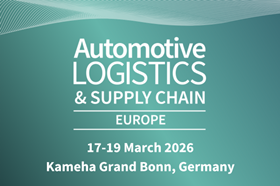Red Sofa interview | GKN Automotive’s Chris Payne on co-creation, visibility and sustainable logistics partnerships for the future
GKN’s Chris Payne discusses logistics partnerships, data visibility and sustainable freight at ALSC Europe 2025.
Related video
-

Red Sofa | Audi and Helrom’s rail project boosts sustainability
-

Red Sofa | How Schaeffler is driving AI in supply chain digitalisation
-

Red Sofa | Balancing luxury design with supply chain efficiency at Aston Martin
-

Red Sofa | VW’s Peter Hörndlein on flexible green vehicle logistics
-

Red Sofa | Jean-Marc Carlicchi on driving Renault’s resilience
Chris Payne, global logistics director at GKN Automotive, took to the Red Sofa at Automotive Logistics & Supply Chain Europe 2025 to discuss a major strategic shift in the company’s logistics operations and the growing importance of collaboration and transparency across the supply chain.
In its transition from an in-house 4PL model to a more collaborative structure with local plant-level logistics responsibility, GKN Automotive is focusing on maintaining a central core team for strategic alignment.
Payne said there is a critical need for data sharing and two-way visibility with logistics providers to proactively manage disruptions. He said the ambition to move towards real-time shipment visibility is driven by customer expectations and the “Amazon effect”.
“There is more improvement that needs to be done. We all dream of this real-time visibility, and I think the Amazon effect is what we all want. In reality, we, we don’t have that at the moment,” Payne said. ”Because of that, we have an expectation from our logistics providers that they’re proactively going to work with us and tell us when they see problems with our with our shipments and contact our local team, so then solutions can be discussed and we can move forward on there and avert risk of delays.
Discussing sustainability, Payne added that there is a need for OEMs to create demand to help green logistics solutions evolve. He said there is a tension between cost, speed and carbon targets in transport, and that early adoption of greener modes of transport or intermodal solutions can help accelerate change.






